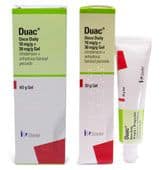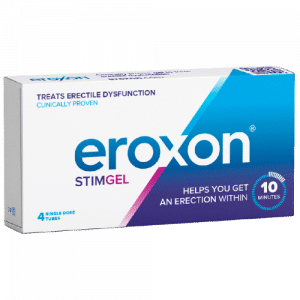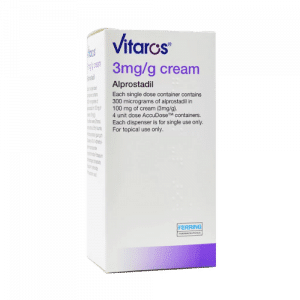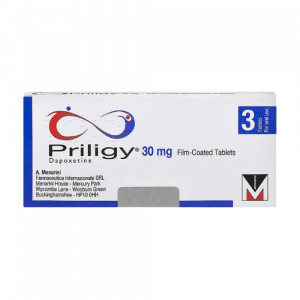
Duac Gel combines clindamycin and benzoyl peroxide to combat acne by targeting bacteria and unblocking pores. Ideal for treating mild acne, including blackheads and whiteheads, Duac Gel reduces spots and inflammation, providing clearer skin. Suitable for individuals over 18 years, it’s an effective step 3 treatment in acne management.
Duac Gel (benzoyl peroxide 3% clindamycin 1%)
£29.99 – £44.99
Product Information
How does Duac Gel (benzoyl peroxide 3% clindamycin 1%)treat acne?
In acne, skin pores get blocked with excess greasy sebum. Acne bacteria grow in the blocked pores leading to whiteheads, inflammation, and pustules.
Duac combines two ingredients, clindamycin and benzoyl peroxide, which both work to reduce the bacteria associated with acne. In addition, benzoyl peroxide helps to unblock pores, preventing whiteheads and blackheads. Duac reduces spots, infection, and inflammation.
Who can use Duac Gel (benzoyl peroxide 3% clindamycin 1%)?
Duac is a step 3 treatment in the Dr Fox acne treatment plan, to be used on mild acne with blackheads and whiteheads.
When should Duac Gel (benzoyl peroxide 3% clindamycin 1%) not be used?
Duac is only for use for over 12-year-olds. Dr Fox only prescribes for over 18s.
Do not use at the same time as other antibiotics to treat acne.
Duac should not be used if you are allergic to the antibiotics clindamycin or lincomycin, or have recently taken a course of clindamycin, lincomycin, or erythromycin.
Do not use Duac on cuts, grazes, sunburn, or eczema.
How to use Duac Gel (benzoyl peroxide 3% clindamycin 1%)
Duac should only be used if you have consulted a doctor and been diagnosed with acne.
- Duac should be applied once a day in the evening.
- Remove makeup, wash, rinse, and dry skin.
- Apply a thin film of gel, with your fingertips, over the affected area, not just the spots.
- One fingertip amount of gel will cover the whole face.
- Wash hands after use.
- Non-greasy makeup can be applied once the gel has dried.
As with all acne treatments, Duac may take some time to work. Some improvement should be seen after about 5 weeks. If after 8 weeks there is no improvement, treatment should be stopped.
The manufacturers recommend using Duac for up to 12 weeks and taking a 6-month break. Once bacteria become resistant to the antibiotic component, clindamycin, the gel will become less effective.
Side effects of Duac Gel (benzoyl peroxide 3% clindamycin 1%)
The most common side effects are redness and soreness, particularly in the first few weeks of treatment. This is mainly due to the benzoyl peroxide component, which is a mild irritant. A non-oily moisturiser can be used. If the redness and soreness don’t settle quickly, Duac should be applied less frequently or even stopped. However, the antibiotic works best if applied every day. If there is a marked very bad reaction, treatment should be stopped straight away.
Duac makes the skin more than usual sensitive to sunlight. High-factor sun cream, sun hats, and sun avoidance are all advisable.
Cautions
- Use with care as Duac gel can stain or bleach clothing, bedding and towels, and even bleach hair.
- Duac is a topical preparation for use only on the skin. It should not be swallowed or applied to the lips. Accidental ingestion should be reported to a doctor straight away.
- Other topical acne treatments containing antibiotics, e.g. Zineryt, should not be used at the same time. Antibiotic tablets or capsules, e.g. lymecycline, to treat acne should not be taken whilst using Duac.
- A small amount of antibiotic from Duac is absorbed through the skin and has the potential to cause intestinal upset, although this is very unlikely.
Pregnant and breastfeeding women should not use Duac, although there is no known identified incidence of significant adverse effects.
Interactions
- Duac may make other topical acne preparations containing tretinoin, isotretinoin, or tazarotene, less effective, and so they should not be used at the same time.
- Creams, gels, or lotions containing benzoyl peroxide should also not be used at the same time.
Other acne treatments
Benzoyl peroxide on its own is available from pharmacies in various strengths as a non-prescription medicine.
Differin cream and gel contain adapalene, which also reduces the blocking of pores by reducing skin shedding.
There are other antibiotic treatments for acne including Zineryt topical skin lotion or lymecycline capsules which are available from Dr Fox.
Some women find that contraceptive pills help improve acne.
People with severe acne including scarring, may benefit from seeing a dermatologist to consider Roaccutane (isotretinoin) tablet treatment.
Related Products
-
Erectile dysfunction medication
Eroxon ED Treatment Gel – 4 Pack
Rated 0 out of 5£25.00 Add to basket -
-
-




